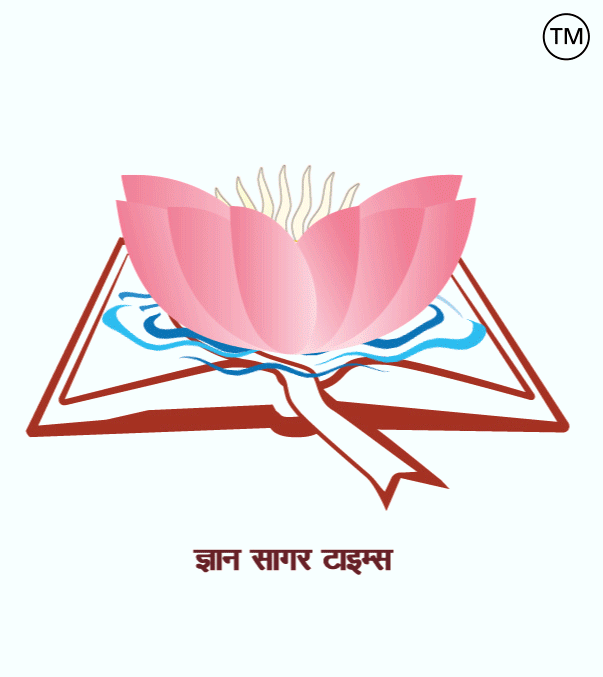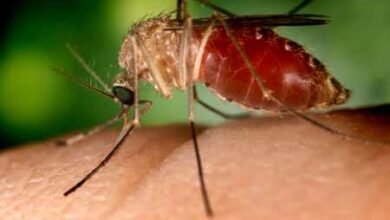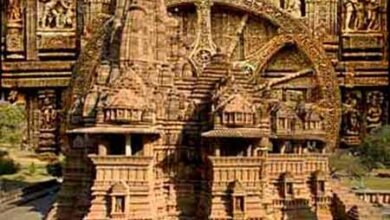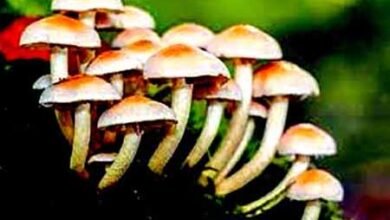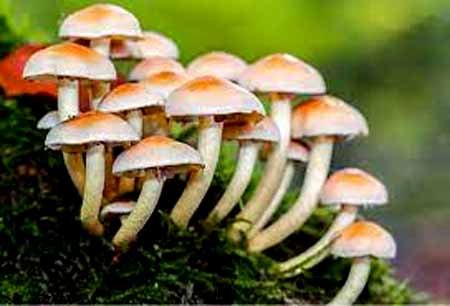
सभी जीव कोशिकाओं (Cell) से बनी होती है, और कोशिकाएँ (Cell) ही जीवन का आधार होती है. कई कोशिकाएँ (Cell) आपस में मिलकर उतक (Tissue) का निर्माण करती है. कई उतक (Tissue) मिलकर अंगों (Organs) का निर्माण करते हैं. प्रत्येक अंग जीवों के लिये विशेष कार्य करते हैं, जैसे:- दाँत का कार्य है भोजन को चबाना, आँख का कार्य देखना है… कुल मिलाकर जीव का शरीर एक सुव्यवस्थित तथा सुगठित संरचना है जो निरंतर गति में रहकर कार्य करती हैं एवं जीव को जीवित रखती हैं. समय, वातावरण व पर्यावरण के प्रभाव के कारण यह संरचना विघटित होती रहती है, जिसके मरम्मत की आवश्यकता होती है. जीवों में कई प्रक्रम होते हैं जो शारीरिक संरचना की मरम्मत भी करते रहते हैं.
जैव प्रक्रम की परिभाषा (Definition of Life Processes):-
वे सभी प्रक्रिया जो सम्मिलित रूप से मरम्मत (maintenance) का कार्य करते हैं उसे जैव प्रक्रिया (Life Processes) कहा जाता हैं. ये प्रक्रिया हैं… पोषण (Nutrition), श्वसन (Respiration), वहन (Trans portaion), उत्सर्जन (Excretion) इत्यादि.
पोषण(Nutrition):-
जीवों के भोजन ग्रहण करने तथा उसका उपयोग कर उर्जा प्राप्त करने की प्रक्रिया को ही पोषण कहा जाता है. जीवों को किसी भी कार्य करने के लिए उर्जा की आवश्यकता होती है. जब जीव चल या दौड़ रहा होता है, या कोई अन्य कार्य करता है, तो उसे उर्जा की आवश्यकता होती है, यहाँ तक की जब जीव कोई कार्य नहीं भी कर रहा होता है, तब भी शारीरिक क्रियाओं के क्रम को मरम्मत करने के लिए भी उर्जा की आवश्यकता होती है. यह आवश्यक उर्जा ही जीव पोषण से प्राप्त करता है.
सजीव अपना भोजन कैसे प्राप्त करते हैं?
किसी भी जीवों को उर्जा की आवश्यकता होती है, तो वे भोजन से प्राप्त करते हैं. परंतु सजीवों में उर्जा प्राप्त करने के तरीके अलग-अलग होते हैं. पेड़ – पौधे तथा कुछ जीवाणु अकार्बनिक स्रोतों से जैसे कार्बन डाइऑक्साइड तथा जल के रूप में तरल पदार्थ प्राप्त करते हैं, जिनसे उन्हें उर्जा मिलती है, ऐसे जीव को स्वपोषी कहा जाता है, या यूं कहे कि खुद से बनाये हुए भोजन से उर्जा प्राप्त करने वालों को स्वपोषी कहते हैं. ग्रीक की भाषा में ऐसे जीवों को ऑटोट्रोप्स (Autotrophs) भी कहा जाता है, अंग्रेजी के इस शब्द में “ऑटो” का अर्थ है “खुद(स्वंय) तथा “ट्रॉप्स” का अर्थ होता है “पोषण”. वहीं, दूसरे जीव जंतु यथा मनुष्य, गाय, तथा अन्य जानवर, जिनकी संरचना अधिक जटिल होती हैं, उर्जा प्राप्ति के लिए जटिल पदार्थों का भोजन के रूप में उपयोग करते हैं. इसे प्राप्त करने के लिए जीव “जैव उत्प्रेरक (Bio – Catalyst)” का उपयोग करते हैं, जिन्हें एंजाइम कहते हैं. ऐसे जीव विषमपोषी जीव (Heterotrophic organisms) कहलाते हैं. ये प्रत्यक्ष या परोक्ष रूप से स्वपोषी पर ही आश्रित होते हैं. अत: जीवों के द्वारा पोषण के लिए आवश्यक उर्जा की प्राप्ति के तरीकों में भिन्नता के आधार पर पोषण को दो भागों में बांटा जा सकता है.
(a) स्वपोषी पोषण,
(b) विषमपोषी पोषण,
स्वपोषी पोषण:-
खुद ही के द्वारा बनाये गये भोजन से पोषण प्राप्त करना ही स्वपोषी पोषण कहलाता है. हरे पेड़ पौधे तथा कुछ अन्य जीव, खुद भोजन बनाकर स्वपोषण करते हैं, अन्य जंतु भी इन स्वपोषी जीव पर भोजन तथा पोषण के लिए निर्भर होते हैं. स्वपोषी जीव पोषण के लिये आवश्यक उर्जा तथा कार्बन प्रकाश संश्लेषण के द्वारा पूरा करते हैं. स्वपोषी पोषण की प्रक्रिया में स्वपोषी बाहर से कार्बन डाइऑक्साइड तथा जल लेते हैं, इस कार्बन डाइऑक्साइड तथा जल को प्रकाश और क्लोरोफिल की उपस्थिति में “कार्बोहाइड्रेट”( उर्जा प्रदान करता है) के रूप में परिवर्तित कर संचित कर लेते हैं, यही प्रक्रिया को “प्रकाश संश्लेषण” कहा जाता है.
विषमपोषी पोषण :-
वैसे जीव जो कार्बनिक पदार्थ और ऊर्जा को अपना भोज्य पदार्थ के रूप में अन्य जीवित या मृत पौधे या जन्तु से ग्रहण करता है उसे विषमपोषी जीव कहते है. जैसे- अमरबेल, जीवाणु और कवक तथा जंतुओं में. विषमपोषी जीव अपना भोजन स्वयं नहीं बना सकते हैं. विषमपोषी पोषण तीन प्रकार का होता है.
- मृतपोषित पोषण (Saprophytic Nutrition): – वैसे जीव जो मृत पदार्थों से अपना भोजन प्राप्त कर पोषित होते हैं मृतपोषित कहलाते हैं, जैसे – कुछ जीवाणु तथा कवक.
- परजीवी पोषण (Parasitic Nutrition): – वैसे जीव जो अपना भोजन किसी दुसरे जीवित पौधे या जंतुओं से प्राप्त कर अपना पोषण करते हैं, परजीवी पोषण कहलाता है जैसे अमरबेल, कवक तथा कुछ जीवाणु एवं जंतु.
- प्राणीसमभोज या पूर्णजांतविक पोषण (Holozoic Nutrition): – वे जीव जो अपना भोजन ठोस या तरल के रूप में निगल (engulf) कर लेते हैं और अपने आप को पोषित करते हैं, पूर्णजांतविक पोषण कहलाते हैं, जैसे – सरे जंतु समुदाय एवं प्रोटोजोआ.
Dr. (Prof.) Amarendra Kumar.
========== ========= ===========
Related To Zoology-176.
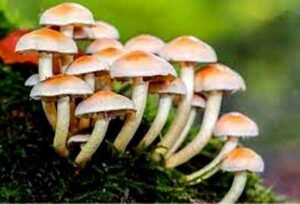
What are Life Processes?
All living beings are composed of cells, and cells form the basis of life. Many cells combine to form tissue. Many tissues together form organs. Each organ performs a specific function for the organism, such as the teeth, which are used to chew food, and the eye, which is used to see. Overall, the body of the organism is a well-organized and well-formed structure, which works by being in constant motion and the organism keeps alive. Due to the effect of time, atmosphere, and environment, this structure keeps on disintegrating, which needs to be repaired. There are many processes in living beings that also keep on repairing the physical structure.
Definition of Life Processes:-
All those processes which collectively perform maintenance work are called Life Processes. These processes are… Nutrition, Respiration, Transport, Excretion, etc.
Nutrition: –
The process of taking food from living beings and getting energy by using it is called nutrition. Living beings need the energy to do any work. When an organism is walking or running, or doing any other work, it needs energy, even when the organism is not doing any work, even to repair the sequence of body functioning, the required energy is required. It gets the necessary energy only from the nutrition of the organism.
How do living things get their food?
Any living being needs energy, so they get it from food. But there are different ways of obtaining energy in living beings. Trees, plants, and some bacteria obtain liquids in the form of carbon dioxide and water from inorganic sources, from which they get energy, such organisms are called Autotrophs, or simply say that they get energy from food made by themselves. Those are called Autotrophs. In Greek words, such organisms are also called Autotrophs, in this Greek word “auto” means “self” and “trophy” means “nutrition”. On the other hand, other living beings like humans, cows, and other animals, whose structure is more complex, use complex substances as food to get energy. To achieve this, organisms use “Bio- catalysts”, which are called enzymes. Such organisms are called Heterotrophic organisms. They are directly or indirectly dependent on Autotrophs only. Therefore, nutrition can be divided into two parts on the basis of differences in the methods of obtaining the energy required for nutrition by the organisms.
(a) Autotrophic nutrition,
(b) Heterotrophic nutrition,
Autotrophic nutrition: –
Getting nutrition from the food prepared by oneself is called autotrophic nutrition. Green trees, plants, and some other organisms make their food and do self-nutrition; other animals also depend on these self-nutrition creatures for food and nutrition. Autotrophic organisms fulfil the energy and carbon required for nutrition through photosynthesis. In the process of autotrophic nutrition, Autotrophs take carbon dioxide and water from outside, convert this carbon dioxide and water into “carbohydrates” (provide energy) in the presence of light and chlorophyll, and store it, this process is called ” called photosynthesis.
Heterotrophic nutrition: –
Those organisms that take organic matter and energy as their food from other living or dead plants or animals are called heterotrophic organisms. Heterotrophic organisms cannot make their food. There are three types of heterotrophic nutrition.
- Saprophytic Nutrition: – Such organisms which obtain nutrients from dead organic matter are saprophytic nutrition and such organisms are called Saprophytes, as some members of fungi and Bacteria.
- Parasitic Nutrition: – Such which obtain their nutrients from other living organisms is parasitic nutrition, and organisms are called Parasites such as Cascuta, a few bacteria, fungi and animals.
- Holozoic Nutrition: – Such nutrition, which is obtained by engulfing or ingesting solid or liquid food by organisms, is Holozoic. It represents all the Protozoans and members of Kingdom Animalia.
Dr. (Prof.) Amarendra Kumar.

